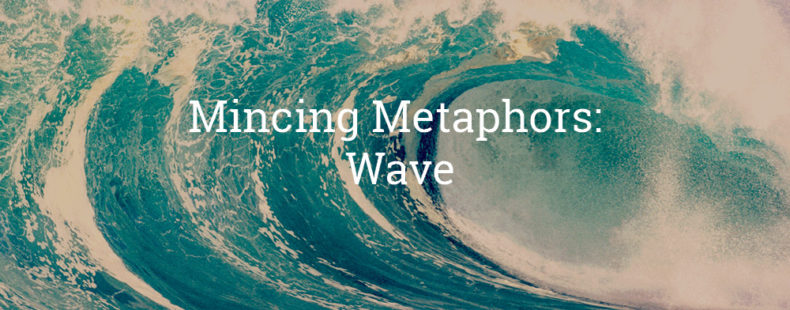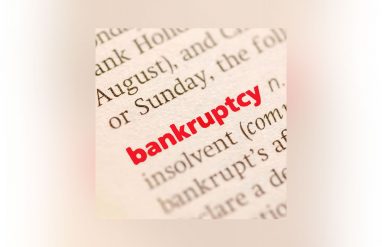by Taneesh KheraWhen you picture a wave, what do you think of? I bet you see a body of water, possibly a lake, but more likely an ocean. A shore might come to mind, as would sand and beaches, and maybe a surfer or a boat or ship. Another possibility, not altogether different, is a hand saying hello, waving goodbye.
If you consume much news, another kind of wave may surface. Maybe you think of the so-called women’s wave, a term that was widely used in reference to the large number of women elected to office in last year’s midterms, subsequently adopted as the theme for this year’s Women’s March. Or perhaps the first wave that swells in your mind is the much-discussed blue wave, a pundit favorite for prognosticating last year’s midterm election results. Some were describing results as a rainbow wave, noting the increased representation of the LGBTQ community in Congress. Or maybe the only wave on your mind is a red wave in 2020. These days, it seems no matter where we look, there’s a wave cresting, poised to overtake the status quo.
So why have so many waves found their way into our cultural lexicon in recent years? In this article, we unpack this oceanic metaphor to better understand what it means and why it’s proving so useful right now.
Why metaphors matter
In linguistics, there’s something called conceptual metaphor. The theory dates back to the book Metaphors We Live By (1980), in which linguist George Lakoff, professor emeritus of Berkeley, and moral philosopher Mark Johnson of the University of Oregon, made a claim: We speak in metaphors, every day, and it goes beyond poets and poetry, reaching even the most humble among us. (Not that poets can’t be humble.) These metaphors are overarching, helping us understand abstract concepts through our innate understanding of concrete ones.
In the book, Lakoff & Johnson outline the theory, listing some of the many metaphors we speak on any given day.
Take the metaphor THE MIND IS A MACHINE. We see this in the language with phrases like he broke down, or he has a screw loose, or my brain is not working today, evidence that our perception of the mind traces back to our knowledge of machines.
The conceptual metaphor ARGUMENT IS WAR comes up in phrases such as thesis defense, fighting words, and attacking the logic of a statement. The framework sets us up to understand an argument as a fight, a confrontation, something that can be won or lost.
Unpacking and mapping these metaphors, a type of linguistic analysis called Conceptual Metaphor Theory, has proven useful in cultural exploration, revealing embedded ideologies through the metaphors found in the discourse of politics, immigration, health and healthcare, education, and so many other areas of life and communication.
Social change as a force of nature
So, what does metaphor have to do with waves?
To understand that, we first must explore our perception of a wave. Inherent to our understanding of a wave is the idea that it’s a single mass, a natural phenomenon. It is movement produced from within. Self-generating, self-governing, its flow is strong, unstoppable. Water can’t be separated easily. It is seen not for the tiny hydrogen and oxygen particles that make it up, but as a shapeless body, able to fill anything. Waves are capable of destroying cities and reshaping landscapes over time. They engulf and wash away. A wave is free moving, belonging to the wild, untamed. Resisting a wave is futile, its power overwhelms.
The waves that are grabbing headlines today though are bound up with notions of sweeping social and political change, yet the power behind them is the same as the natural phenomenon described above. Although the metaphor is always in popular use, it seems that it flows most freely in times of cultural upheaval, when our most fundamental assumptions and cultural norms are shifting or being challenged. Let’s turn to recent history for some context.
Waves of women disturbing the waters
Beginning in the 1960s, feminists found a new use for these metaphorical waves. In a 1968 New York Times article titled “The Second Feminist Wave,” Martha Weinman Lear writes, “In short, feminism, which one might have supposed as dead as the Polish Question, is again an issue. Proponents call it the Second Feminist Wave, the first having ebbed after the glorious victory of suffrage and disappeared, finally, into the great sandbar of Togetherness.”
Starting in the 1960s and ending in the ’80s, the second wave picked up where the first wave (1848–1920), folded into the abolitionist movement, left off—women’s suffrage—the right to vote.
A third wave gushed forward in the 1990s, flooding the nation with a message: Embrace femininity. The message was an ideological shift from the second wave, declaring that girl is not a bad word and girls were fierce in their own right. This wave coincided with Anita Hill’s testimony against Clarence Thomas, then a Supreme Court nominee. She testified before the Senate that he had harassed her at work. He was appointed anyway.
Now we’ve entered what some refer to as the fourth wave of feminism. This is the #MeToo and #TimesUp era. The appointment of Thomas was fresh in the minds of many last year as Christine Blasey Ford came forward with allegations of sexual assault against then-Supreme Court nominee Brett Kavanaugh. The tendency to dismiss women’s experiences is central to this wave. The rampant harassment and sexual coercion that has long been a part of our culture is being exposed and called out for its damaging effects on the psyche and sense of self-worth of both oppressor and oppressed.
The usefulness of the wave metaphor in these contexts is that it frames the women’s movements and their respective accomplishments not as separate, disjointed events or aberrations, but as outgrowths of the same cause. They may be different waves, but they are part of the same ocean.
While that was useful for a while, nowadays the assumption of a single organizing cause or single understanding of feminism can be problematic. This is where the waves of today become particularly interesting.
A wave of intersectionality
That’s because the words that modify today’s metaphorical waves speak volumes. Consider women’s wave. The possessive means it’s women who own it. Not just one woman, or a few, but many.
We’re getting ready to march! #WomensWave
📸 Bradley Williams pic.twitter.com/K85IE0lsbn
— Women's March (@womensmarch) January 19, 2019
The third annual Women’s March took place on January 19, 2019 and the wave metaphor was front and center. Momentum, scale, and transformation were key to its meaning, both in looking forward and back to political wins over the last two years.
But that’s not the only wave we’ve seen recently. A record number of women were elected into US Congress in 2018, in what news media across the nation dubbed the pink wave. We saw 29-year-old Alexandria Ocasio-Cortez win her district in the Bronx to become the youngest person ever elected into the US Congress. She identifies as Latina and a democratic socialist. Ayanna Pressley became the first black female member of the House for the state of Massachusetts, unseating a fellow Democrat Mike Capuano, who had held office for six years. Democrat Jahana Hayes became the first black Congresswoman to represent the state of Connecticut. Deb Haaland and Sharice Davis, Democrats of New Mexico and Kansas, respectively, were the first ever Native women elected into Congress.
Davis is also openly gay and part of the rainbow wave, as this year marks the highest number of members of the LGBTQ community elected into office. Jared Polis, governor of Colorado, became the first openly gay governor of any state in the country. And while she didn’t win, Amelia Marquez of Montana, who is openly transgender, won her party’s primary and made a strong showing in the general election, all while repeatedly being misgendered by her GOP opponent and facing death threats on the campaign trail.
Forging a new landscape
These waves are redefining what the word representation means. Having more women, people of color, and members of the LGBTQ community in office, running for office, than ever before signals a shift in the nation’s thinking—the people themselves should be in positions of power, controlling or influencing legislation directly. It’s a sign that we are examining history but also surging a new path forward.
It’s time for these waves to take the reins and steer for a while. And this group shows us that being from this country means diversity. We are colorful and international, not singular nor exclusionary. We move in unison because of this diversity. And we’re stronger for it.
We don’t simply own the wave, we are the wave. And like a wave, we will not be objectified. We will not be seen for our parts, and we are too strong together to be divided. We flow effortlessly, crash any barriers, swallow fragile sand castles, overflow shallow moats. Like a wave, we can’t be contained, or stopped, and we will not quit.
And like a wave, these movements of equality are fresh. They erode the old and cleanse the surface, making way for new landscape. And perhaps more importantly, they are inevitable.For a more in-depth discussion of the waves of feminism, we recommend Constance Grady’s article “The waves of feminism, and why people keep fighting over them, explained” at Vox.
Taneesh Khera is a poet, writer based in Oakland, CA. She’s also a linguist trained in the US, Mexico, and Chile. Se habla español. See more of her work here: www.kheraphrase.ink.














